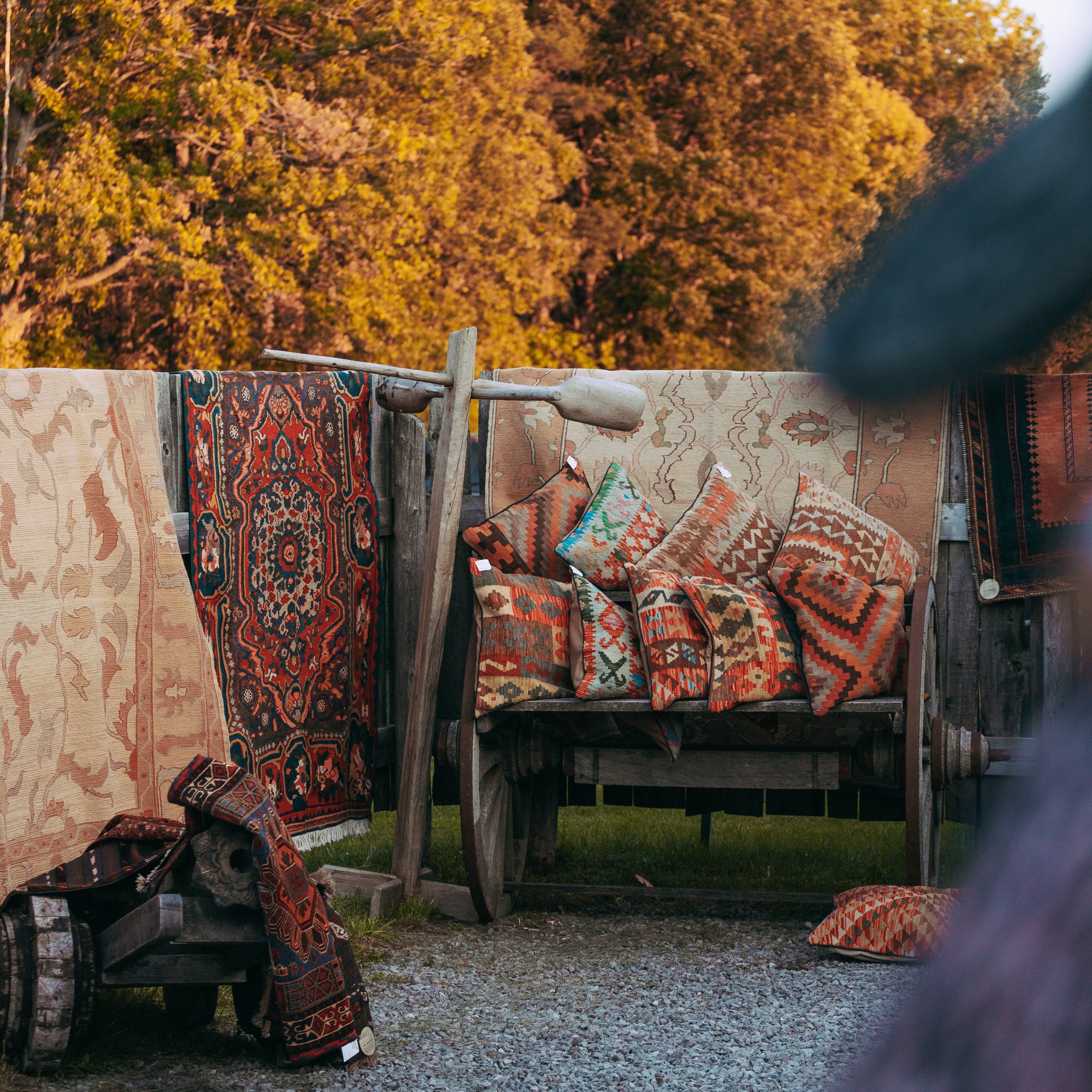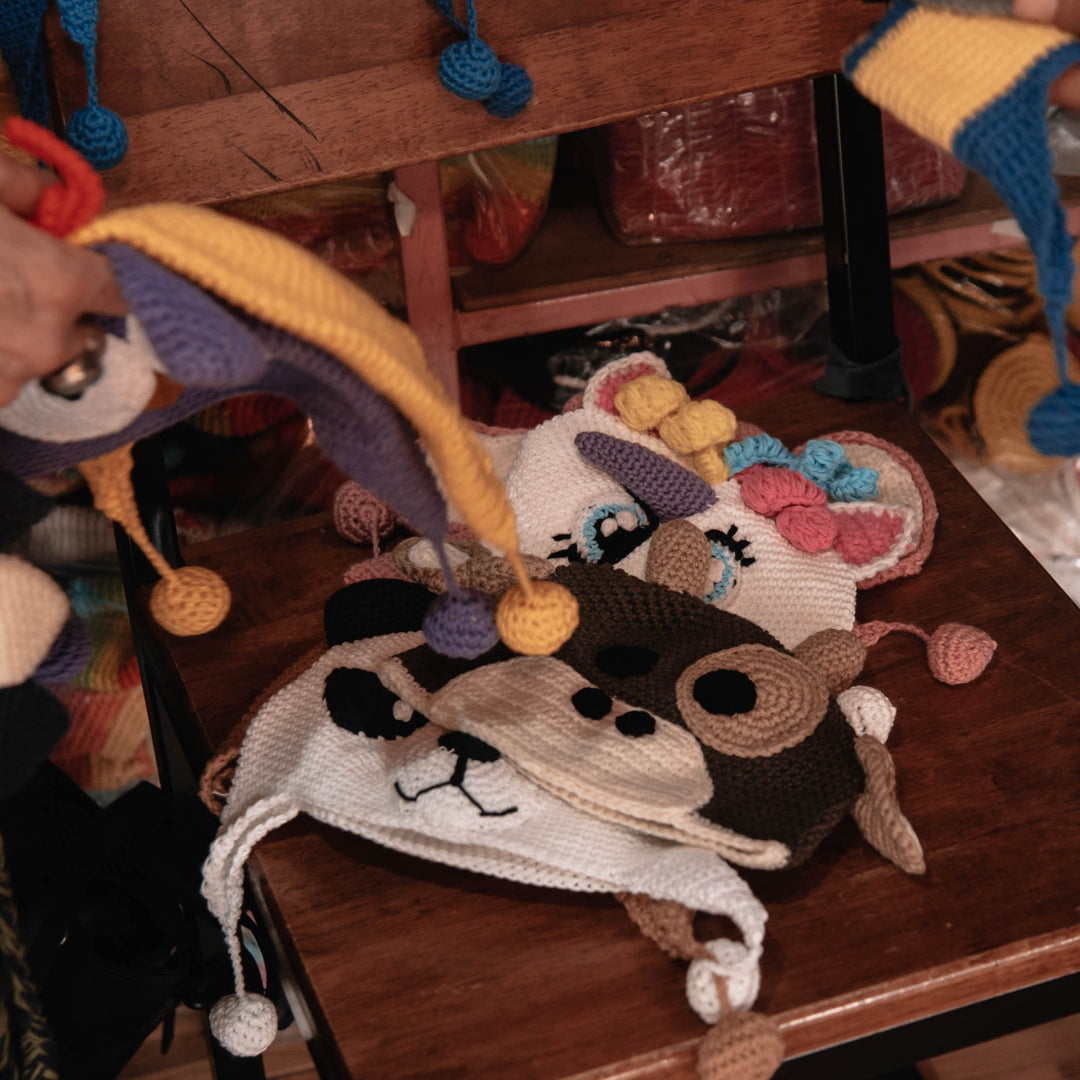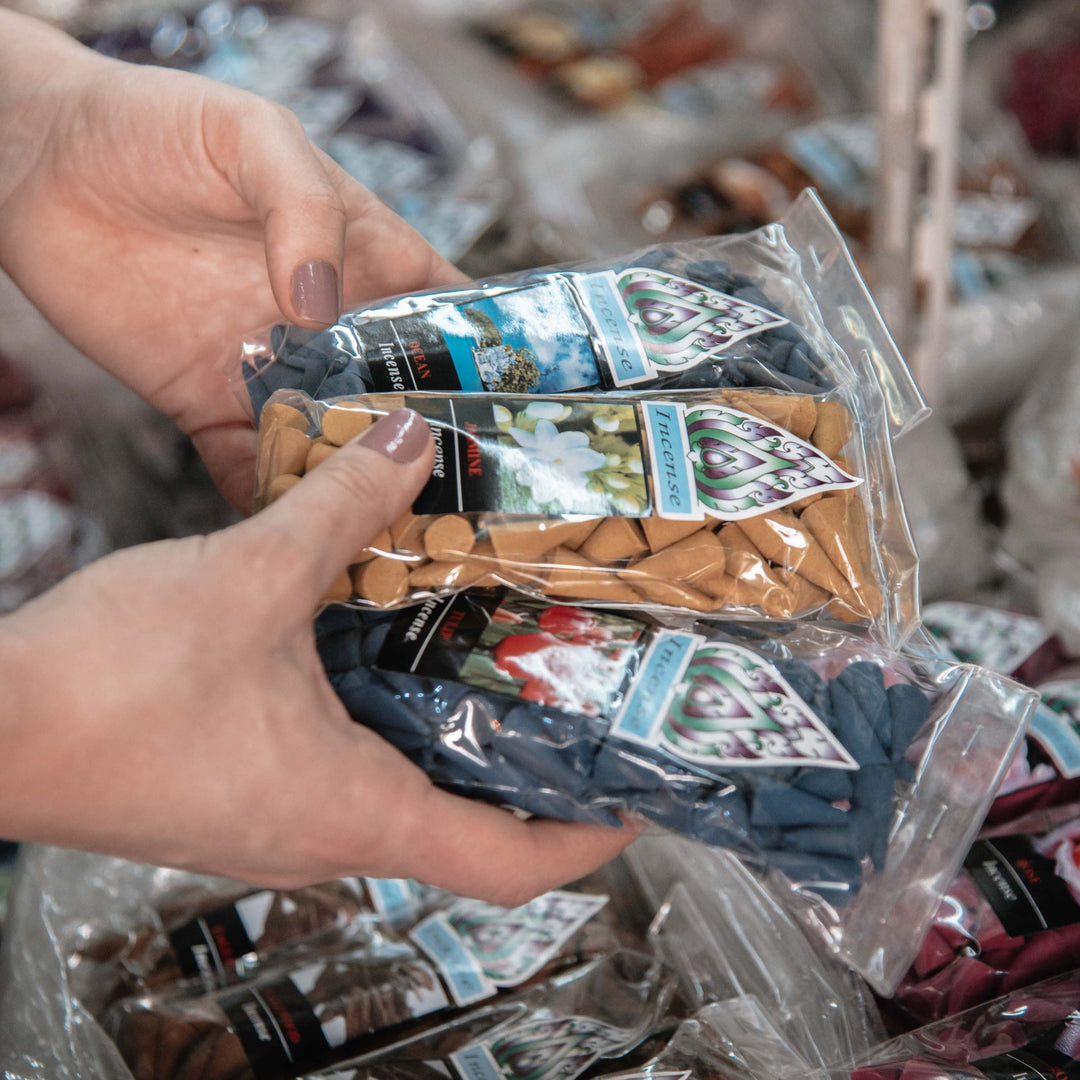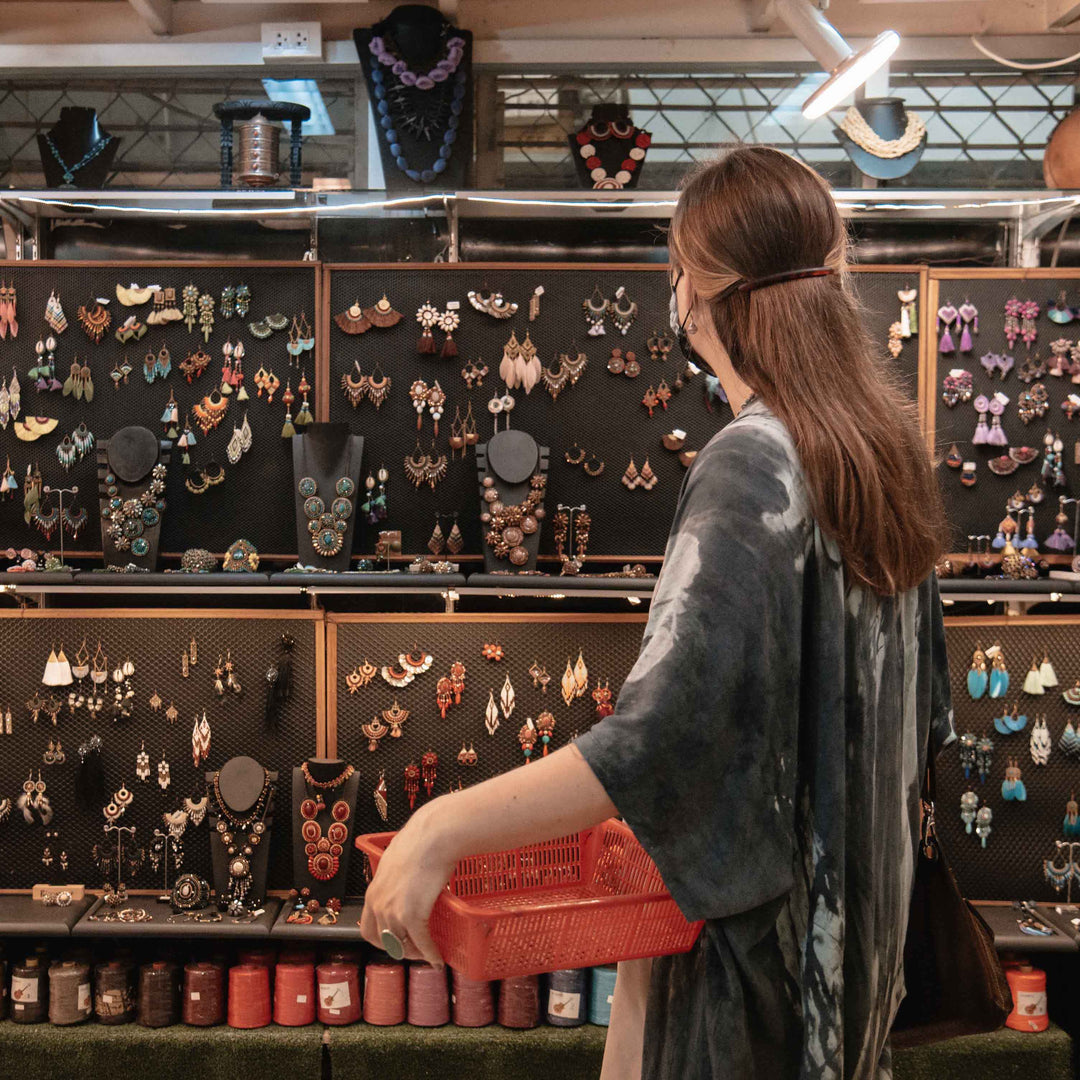Q&A With One of Our Mexican Ceramic Suppliers
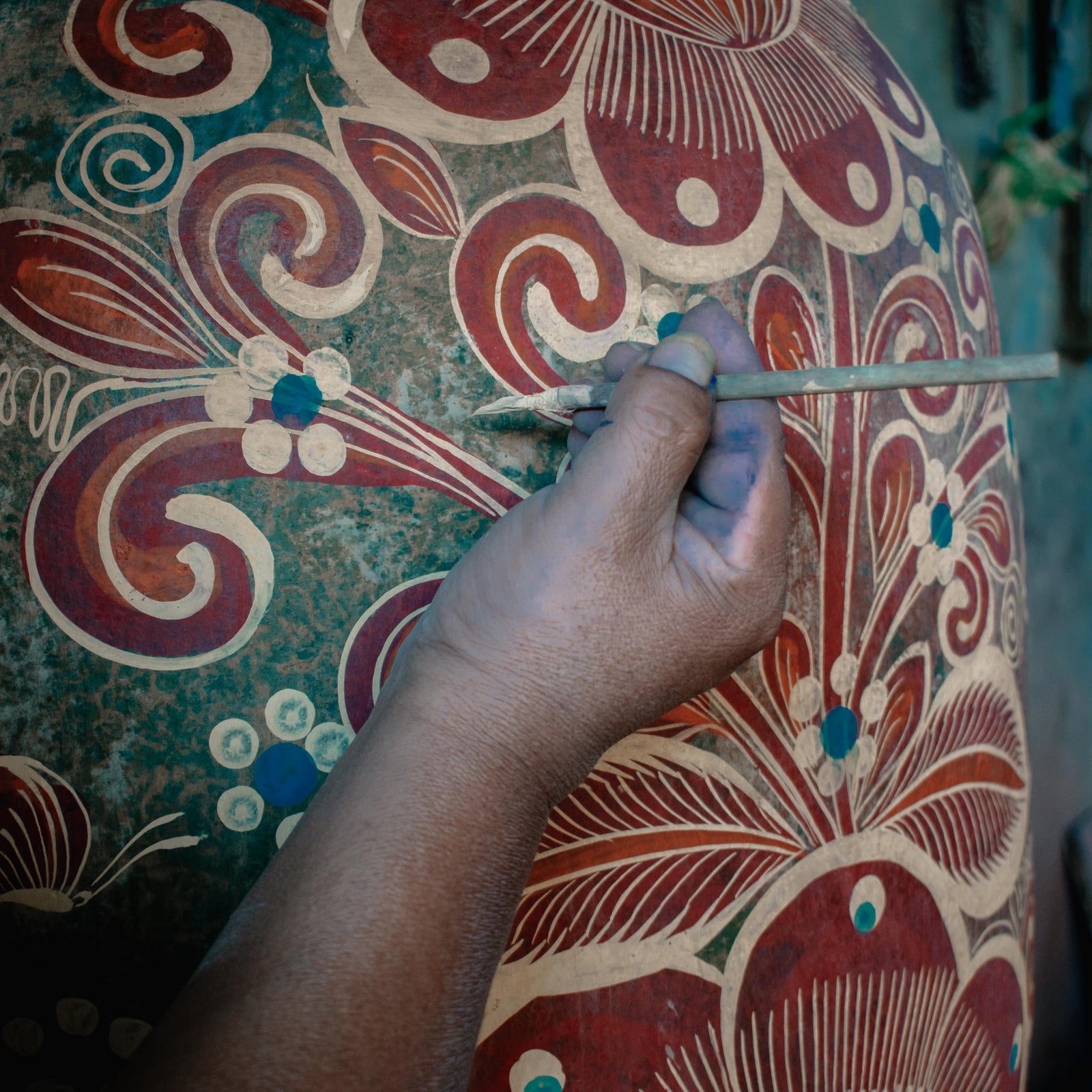
Cerámic
Cruz Blanca
Photos and Interview by Ana Laura Jimenez Saucedo
Story Edited by Shauna Wiseman
Located in Mexico.
*This article has been translated from Spanish and edited for clarity.
Before Christmas, Anneka headed south to Guadalajara to visit some of our very talented artisans. A collection of shops, workshops, food stands, public art along with chic boutique hotels make for all in one experience for all our worldly shopping needs. Crafts, ceramics, furniture, decor you will find it all here and in a much less touristy area where authenticity and real business takes place!

This specific shop began 47 years ago, although throughout this trajectory the techniques have been adapting and changing. Started by Agustin and supported by his wife, Maria, now many family members, 15 artisans and employees are split between 2 separate locations. We have been buying our ornately painted ceramic pots, mask and decorative terracotta for 8 years.
Agustin talks about the techniques that started the business and where he learned them from, " The greased clay and burnished clay techniques were taught to me by another artisan named Azul, while the high and low temperature techniques were learned from Ken, an artisan born in the United States who emigrated to the municipality and founded a well-known company." He also learnt some of the high-temperature ceramic trade from Jorge, an artisan born in Monterrey.

The tastoanes are figures that represent the indigenous Jaliscans and their fight against Spanish conquerors, often portrayed by masked costumes made in the area during ceremonies depicting St. James coming to Jalisco. Many of the artisans in the area also began to produce pre-Hispanic figures with earth, in other trades of Tonalá and in nature.
"I also owe part of my inspiration to Ken Edwards, who encouraged me to experiment with earth to achieve different shades in crafts," Agustin states.
Throughout these 47 years, many generations of relatives and people from Tonalá have passed through the workshops and learned the trade with Agustín who has been enriched by a multitude of experiences and become something of an expert in the art of ceramics in the area whose knowledge is often called upon by other artisans.




Meet The Team

Agustin
FOUNDER

Celina

Evelyn
DAUGHTER-IN-LAW

Hector
SON

José Luis
RODOLFO"S BROTHER

José

Guadalupe

Fernando

Andrés

Rodolfo
SPOUSE OF A NIECE

Paulina
DAUGHTER

Leonides

Juan

Lupita

Luis
SON OF JOSE LUIS

Magdalena
DAUGHTER
It was the high-temperature ceramics from which this technique that the current products of this business received a notable influence, especially the decorations of the products, which are actually a continuation of the decorations that were made in high-temperature tableware. It was also ceramics that consolidated the business, which began, grew and has been maintained thanks to the work of Jorge and his family, and at the time also thanks to the work of Agustín's family, who worked very closely and for long hours in the workshops.
The high-temperature tableware business grew and was very prosperous, and Agustín traveled to different states of the Republic to promote and sell his products, although from then on the ceramic workshops saw his technique migrate towards oxidized clay, a technique that was finally consolidated and that has allowed them to keep the tradition alive, stay in the market and continue to be a source of income for the family.






THE PROCESS
Most of the materials come straight from nature: titanium dioxide, red clay, black clay... "The materials that I use in the manufacture of my products are earth that I myself order to make, to grind: clay or kaolin that I use to color the products. I also buy some of the materials, but I like to experiment, mix the materials until I get my own formulas and come up with different product lines. " - Agustin

Step 1
Seal with resin, which can be black, red or blue, but in this case, due to the type of finish, black is used.

Step 2
Paint the base, which is done with prepared vinyl that can be red, brown, yellow, green or blue.

Step 3
Earth baths, for which kaolins are used to help give the rustic or oxidized finish.

Step 4
Scraping, which helps to give texture to the paint on the products; to achieve this effect a scourer is used.

Step 5
First layer of varnish, to fix and protect the paint of the products.

Step 6
Decorated: palmate and outlined figures that give the products a characteristic finish, typical of the technique that I have developed.

Step 7
Second layer of varnish, to fix and protect the base paint and decoration. Then the beautiful products are finished and sent to the shop for sale to customers!


They were not left untouched by covid unfortunately and it has made for a challenging few years. When asked what the hardest parts were Agustin says, "The instability, deprivation and loss of routines, the closure of the business to the public and the lack of visits by customers."
Despite all the inconveniences that the pandemic brought, we never stopped working, nor paying our workers' salaries, and have now regained some stability. With the orders starting to flow and some travel resuming they can focus on making some of their favourite products again.


These include the vases and certain parts of the human body that end up converted into handcrafted figures, such as hands and feet. Although the techniques have changed and have been adapted throughout the history of the business, they have continued to manufacture these products in one way or another.
Being in Mexico has allowed them to become part of the rich tapestry of history in the area, from the indigenous times to the Spanish conquest. The traditions, the trades and the great artisan offerings that Tonalá has: burnished clay, stoneware, papier-mâché and petatillo, to mention some of the most important techniques all contribute to reasons they are so proud to call this place home.

When asked about what he would like people to know about the business Agustin says, "I would like for people to know more about the techniques, for people to be willing to learn and for traditions not to be lost, to draw new lines. Promote crafts with the support of the government and the interest of the people to keep trades and traditions alive." Something he has tried to teach his son and pass onto the workers by working alongside them for years and with other artisans in Tonala who come to him for wisdom and knowledge.


This teaching of others is something that brings him great happiness, "That I have been able to do something for others, teach people the trade and techniques, generate sources of employment. It gives me satisfaction that many of the generations that learned with me still dedicate themselves to crafts and live from it" he says. But as with most his family and work give him the most joy and happiness; the blessing of knowing that his whole family has been supported by this trade and this work and that they get to come together everyday to do it truly gives this shop its soul.
Shop the beautiful creations of these amazing artisans at the Bazaar!





